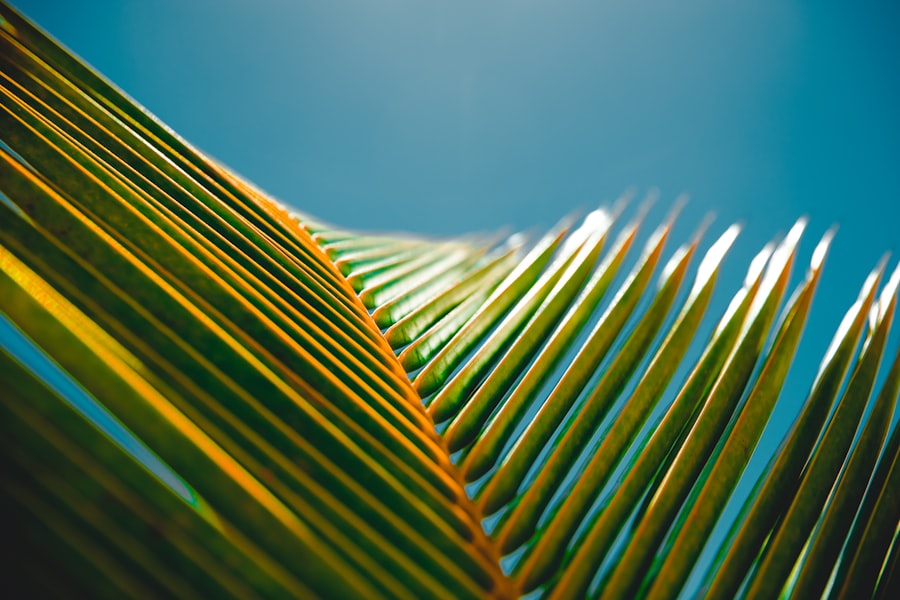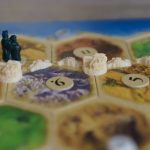Download links
How to install Exploring the Beauty of Sebu Island APK?
1. Tap the downloaded Exploring the Beauty of Sebu Island APK file.
2. Touch install.
3. Follow the steps on the screen.
Description
Sebu Island, a hidden gem in the Philippines, is part of the larger province of South Cotabato. Nestled in the heart of Mindanao, this island is often overshadowed by its more famous neighbors, yet it boasts a unique charm that captivates those who venture to explore its shores. The island is characterized by its lush landscapes, vibrant culture, and rich biodiversity, making it an ideal destination for travelers seeking both adventure and tranquility.
With a population that thrives on agriculture and fishing, the local communities maintain a harmonious relationship with their environment, which is evident in their customs and daily lives. The island’s geographical features are as diverse as its cultural tapestry. Sebu Island is dotted with rolling hills, pristine lakes, and cascading waterfalls, all of which contribute to its breathtaking scenery.
The climate is tropical, with a wet season that nourishes the verdant flora and a dry season that invites visitors to explore its natural wonders. As tourism begins to flourish, Sebu Island stands at a crossroads, balancing the need for economic development with the preservation of its unique ecological and cultural heritage.
Key Takeaways
- Sebu Island is a tropical paradise known for its natural wonders, rich cultural heritage, and exciting outdoor activities.
- The island boasts stunning natural wonders such as waterfalls, caves, and lush forests, making it a haven for nature lovers and adventure seekers.
- Sebu Island is steeped in cultural heritage and traditions, with vibrant festivals, traditional dances, and local crafts that showcase the island’s unique identity.
- Adventure enthusiasts can enjoy a range of outdoor activities on Sebu Island, including hiking, diving, snorkeling, and zip-lining, amidst its breathtaking landscapes.
- The island’s culinary scene offers a delightful array of local delicacies and fresh seafood, providing a true taste of Sebu’s flavors and culinary traditions.
Natural Wonders of Sebu Island
One of the most striking features of Sebu Island is its stunning natural landscape, which includes the famous Lake Sebu. This freshwater lake is not only a vital resource for the local community but also a breathtaking sight that attracts nature lovers and photographers alike. Surrounded by lush greenery and towering mountains, Lake Sebu is home to several indigenous fish species and serves as a habitat for various bird species.
The lake’s serene waters reflect the sky, creating a picturesque setting that changes with the time of day, offering visitors a tranquil escape from the hustle and bustle of modern life. In addition to Lake Sebu, the island is renowned for its waterfalls, particularly the Seven Falls of Lake Sebu. This series of cascading waterfalls offers an exhilarating experience for those willing to hike through the surrounding trails.
Each waterfall has its own unique character, with some plunging dramatically into deep pools while others create gentle streams that meander through lush vegetation. The area surrounding the falls is rich in biodiversity, providing opportunities for birdwatching and spotting endemic plant species. The natural beauty of these waterfalls not only serves as a backdrop for adventure but also plays a crucial role in the local ecosystem.
Cultural Heritage and Traditions of Sebu Island

Sebu Island is home to the T’boli people, an indigenous group known for their rich cultural heritage and vibrant traditions. The T’boli community has preserved their customs over generations, making them an integral part of the island’s identity. One of the most notable aspects of T’boli culture is their traditional weaving techniques, particularly the creation of T’nalak fabric.
This intricate textile is made from abaca fibers and is often adorned with vibrant patterns that hold significant cultural meanings. Visitors to Sebu Island can witness skilled artisans at work, learning about the symbolism behind each design and the painstaking process involved in creating these beautiful pieces. Festivals play a vital role in the cultural life of Sebu Island, with events such as the T’nalak Festival celebrating the T’boli heritage.
This annual event showcases traditional music, dance, and crafts, allowing both locals and tourists to immerse themselves in the vibrant culture of the island. The festival not only serves as a platform for cultural expression but also fosters community spirit and pride among the T’boli people. Through these celebrations, visitors gain insight into the values and beliefs that shape the lives of the island’s inhabitants.
Adventure and Outdoor Activities on Sebu Island
| Activity | Number of Tourists | Duration |
|---|---|---|
| Hiking | 5000 | 1-3 hours |
| Snorkeling | 3000 | 2-4 hours |
| Scuba Diving | 2000 | 3-5 hours |
| Ziplining | 1500 | 1-2 hours |
For those seeking adventure, Sebu Island offers a plethora of outdoor activities that cater to various interests and skill levels. Hiking enthusiasts can explore numerous trails that wind through the island’s lush forests and mountainous terrain. One popular trek leads to Mount Sumpong, where hikers are rewarded with panoramic views of Lake Sebu and the surrounding landscape.
The diverse flora and fauna encountered along these trails provide ample opportunities for nature photography and wildlife observation. In addition to hiking, Sebu Island is an excellent destination for eco-tourism activities such as zip-lining and horseback riding.
Horseback riding tours provide a more leisurely way to explore the island’s natural beauty while connecting with local guides who share their knowledge about the area’s ecology and history. These activities not only promote physical fitness but also encourage visitors to appreciate the stunning environment that Sebu Island has to offer.
Culinary Delights of Sebu Island
The culinary scene on Sebu Island reflects its rich cultural heritage and abundant natural resources. Local cuisine is heavily influenced by both indigenous traditions and regional flavors, resulting in a unique gastronomic experience for visitors. One must-try dish is “tinola,” a comforting chicken soup made with ginger, green papaya, and chili leaves.
This dish exemplifies the use of fresh ingredients sourced from local farms and gardens, showcasing the island’s agricultural bounty. Another culinary highlight is “bulu,” a traditional T’boli dish made from rice wrapped in banana leaves and steamed to perfection. Often served during special occasions or festivals, bulu embodies the communal spirit of T’boli culture as families come together to prepare and share meals.
Street food vendors also offer an array of snacks such as “kakanin,” sweet rice cakes made from glutinous rice and coconut milk, providing visitors with an authentic taste of local flavors. Exploring Sebu Island’s culinary landscape allows travelers to connect with its culture on a deeper level while indulging in delicious dishes.
Best Beaches and Water Activities on Sebu Island

Escape the Crowds and Unwind
The tranquil atmosphere makes it an ideal spot for families or couples looking to escape the crowds. Water activities abound on Sebu Island, with opportunities for kayaking, paddleboarding, and snorkeling available at various locations around the island.
Explore Sebu Island’s Diverse Wildlife
Kayaking on Lake Sebu allows visitors to explore its serene waters while getting up close to its diverse wildlife. For those interested in snorkeling, nearby coral reefs provide a glimpse into the vibrant underwater world teeming with marine life.
Promoting Sustainable Tourism
These activities not only enhance visitors’ experiences but also promote environmental awareness by encouraging sustainable practices among tourists.
Exploring the Marine Life of Sebu Island
The waters surrounding Sebu Island are rich in marine biodiversity, making it an excellent destination for snorkeling and diving enthusiasts. The coral reefs near the island are home to a variety of fish species, including clownfish, parrotfish, and angelfish, creating a colorful underwater spectacle that captivates divers and snorkelers alike. The health of these reefs is crucial not only for marine life but also for local fishing communities that rely on these ecosystems for their livelihoods.
Efforts are underway to protect these vital marine habitats through conservation initiatives aimed at promoting sustainable fishing practices and raising awareness about marine biodiversity. Local organizations work closely with communities to educate them about the importance of preserving their natural resources while providing alternative livelihood options that reduce pressure on marine ecosystems. By fostering a sense of stewardship among residents and visitors alike, Sebu Island aims to ensure that its rich marine life continues to thrive for generations to come.
Sustainable Tourism and Conservation Efforts on Sebu Island
As tourism begins to grow on Sebu Island, there is an increasing emphasis on sustainable practices that protect both the environment and local culture. Community-based tourism initiatives have emerged as a way to involve local residents in tourism development while ensuring that they benefit economically from visitors’ presence. These initiatives often include guided tours led by local residents who share their knowledge about the island’s ecology and cultural heritage.
Conservation efforts are also gaining momentum on Sebu Island, with various organizations working to protect its natural resources through reforestation projects and marine conservation programs. These initiatives aim to restore degraded habitats while promoting biodiversity conservation as a means of enhancing ecological resilience against climate change impacts. By prioritizing sustainability in tourism development, Sebu Island seeks to create a model for responsible travel that respects both its natural beauty and cultural heritage while providing economic opportunities for its residents.
In conclusion, Sebu Island stands out as a destination that offers a unique blend of natural beauty, rich cultural heritage, adventure opportunities, culinary delights, and sustainable tourism practices. As more travelers discover this hidden gem in the Philippines, it becomes increasingly important to balance tourism growth with conservation efforts to preserve what makes this island truly special.
FAQs
What is Sebu Island?
Sebu Island is an island located in the Philippines, specifically in the Visayas region. It is the second largest island in the Philippines and is known for its beautiful beaches, rich culture, and vibrant marine life.
What are the popular attractions in Sebu Island?
Some popular attractions in Sebu Island include the historic Magellan’s Cross, the stunning Kawasan Falls, the vibrant Sinulog Festival, and the beautiful beaches of Moalboal and Bantayan Island.
What is the climate like in Sebu Island?
Sebu Island has a tropical climate with two distinct seasons: the dry season from November to April, and the wet season from May to October. The island experiences warm temperatures throughout the year, making it an ideal destination for beachgoers and outdoor enthusiasts.
What are the transportation options to get to Sebu Island?
Travelers can reach Sebu Island by air through Mactan-Cebu International Airport, which is the main gateway to the island. Additionally, there are ferry services that connect Sebu Island to other islands in the Philippines.
What are the popular activities to do in Sebu Island?
Some popular activities in Sebu Island include snorkeling and diving to explore the vibrant marine life, island hopping to visit nearby islands and beaches, exploring the historical sites and landmarks, and enjoying the local cuisine and cultural performances.





